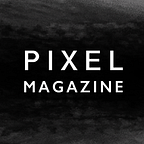Playing With Perception in Postproduction
Bill Durgin finds inspiration in the censored everyday nudity found in Instagram posts, but his resulting images are hardly so common. Drawing from the design principle of gestalt theory, Durgin is preoccupied with the question of how much figure needs to be present to register as distinct from the background. The product of this fascination is Figure Ground, a series of composite images, gorgeous and grotesque, that unfold in postproduction. For Polarr, I spoke with him about the series and his process.
Figure Ground refers to the principal in gestalt theory that a figure is perceived through its distinction from the background. Several images from a single shoot are layered and systematically erased to blur the boundary between what is figure and what is background, challenging ideas of perception and image consumption. In this age of seamlessly altered and composite images, Figure Ground brings the idea of image composite to the forefront, making the act of alteration the figure itself.
Emily von Hoffmann: This series seems like a satire that brings the image composite to the foreground (both literally, and in the viewers’ mind). Can you tell us more about the concept for this series, and how it arose? Why did this feel like a compelling subject to explore and expose?
Bill Durgin: I hadn’t conceived of this project as a satire, though many images are satirical, I think of it more as a play on perception. I’m fascinated with the concept that a figure can only be perceived through its distinction from the background, and how much figure needs to remain in order to be perceived.
In all my previous series the images were created in camera. I used set design, contortion, and camera perspective to explore ideas of perception and image abstraction. Due to the visual play often created with the abstracted figures, it was often questioned whether or not I had altered the images in postproduction (Photoshop). While I had enjoyed the labor of bringing these images together on set and in camera, I was more interested in discussing the content of the images rather than defending how they were made. I decided I would make a series that is obviously done in postproduction, and this led to Figure Ground.
EvH: Many of your projects involve really intriguing distorted or edited figures, often nudes, in a gallery-like setting. What do you think it is about this aesthetic that makes it a preoccupation for you?
BD: I have a soft spot for minimalism and constructivism, which tends to drive my set design. The abstracted figures come from an emulation of figuration painters, modernist sculptors, and surrealism. I’ve always had a fascination with the body that has been apart from common perceptions of the figure. I’ve found that painters and sculptors are able to create figures that express more inward thought than outward appearance. These ideas are almost impossible to image with a camera, so I push bodies to their limits to get as close as I can.
EvH: What’s your process like for conceiving of and designing the individual images? How “complete” or detailed is your vision at the start, and how much unfolds during the making?
BD: Each image comes together very differently. I’ll have an idea for an image, either a pose, gesture, or a set, and use that as a launching point. Once on set I often throw my original concept out the window and improvise based on what comes together or what can be physically achieved. This may involve a complete rework of the set, and many different poses. It’s often a mistake, or outtake, that ends up driving the rest of the shoot. There is nothing better than seeing an image come together that goes beyond my original idea, which is usually quite pedantic.
EvH: Can you share any specifics from a particular image’s origin story?
BD: One image, “Hailey with Pegboard,” came about while I was building a set for an earlier shoot. The model was late and I began taking self portraits to see where we might begin as time was dwindling. I began replacing parts of myself with slightly different backgrounds switching them back and forth. As I continued to have radio silence from the model, and was getting grumpy about it, I started seeing how much I could completely do without a model and still have a figure present. That model never showed, and I used this concept on my next shoot.
EvH: Logistical question here — how does one go about casting models for a project like this? Did you have really specific things in mind, or were you less particular because the final product is altered more thoroughly?
BD: My first criterion is that they are enthusiastic about the work. Since the body is abstracted, people have to be willing to achieve that affect with me which may involve strenuous poses for long periods. Right now I’m only working with one model, other than myself, so I haven’t had to cast much lately.
EvH: Can you tell us any photographers or artists in any medium that inspire you right now?
BD: Francis Bacon, Rebecca Warren, Lucian Freud, Hans Bellmer, Hannah Hoch, Bruce Nauman, Jenny Saville, Urs Fisher, Lucas Blalock, Viviane Sassen, Carrie Moyer, and Instagram posts censored for nudity.
Bill Durgin is a photographer based in NYC. Explore his work and follow him on Instagram.
